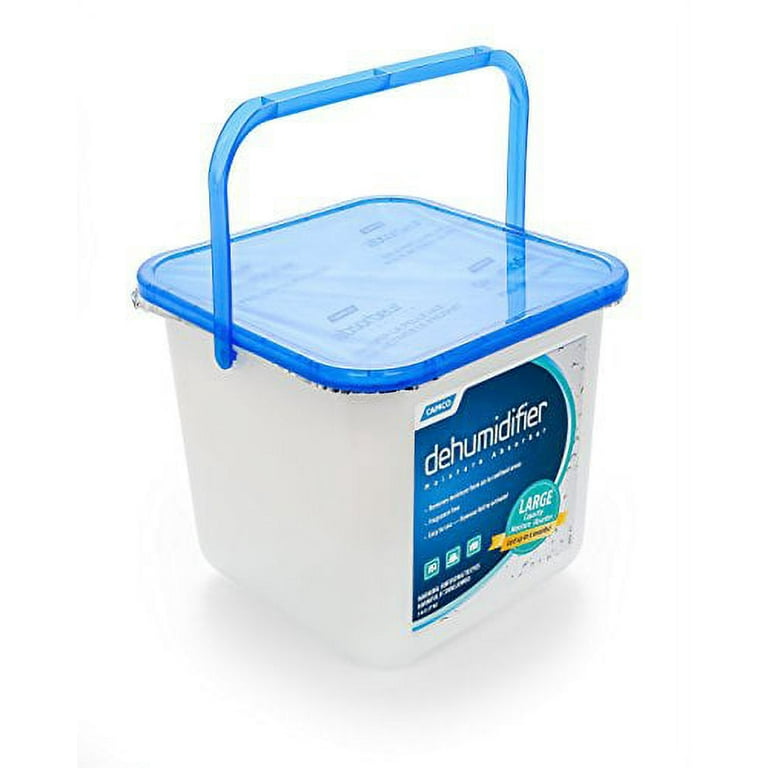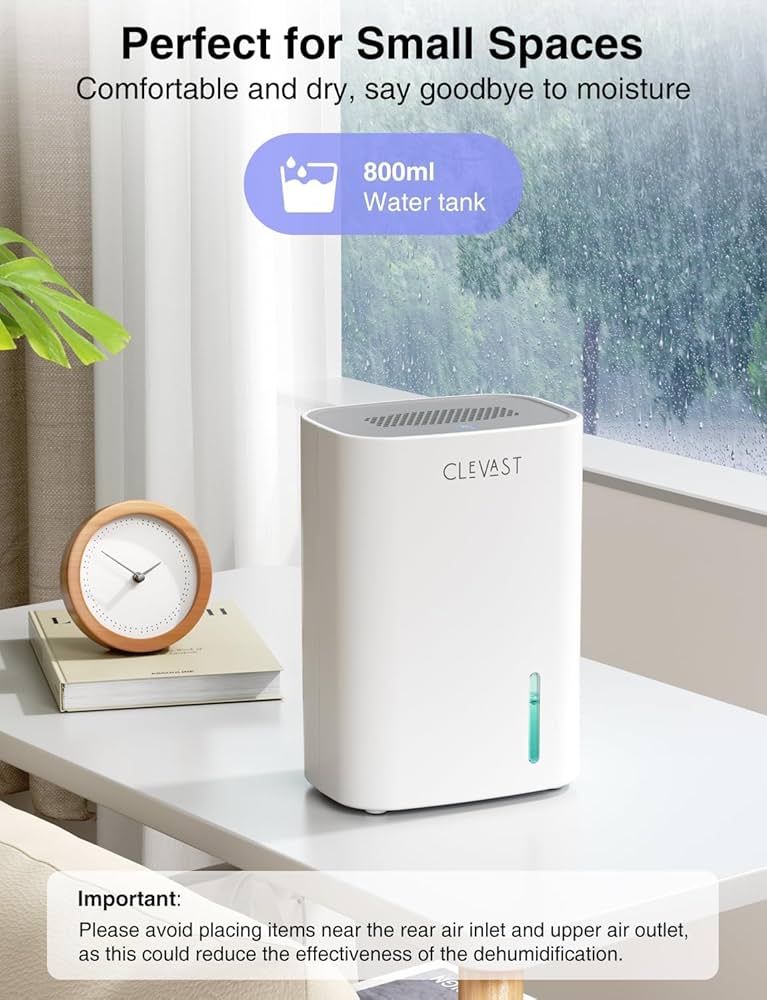Imagine stepping into your small room and feeling a damp, clammy sensation in the air. It’s uncomfortable, and you know it’s not good for your space or health.
Moisture can make your room feel unpleasant and even lead to mold growth, which no one wants to deal with. But don’t worry; you’re not alone in facing this challenge. Many people like you are looking for effective ways to reduce moisture and create a healthier environment.
You deserve a space that feels fresh and inviting, and by understanding how to control moisture levels, you can transform your room into a cozy haven. Keep reading to discover practical tips that will help you banish excess moisture and reclaim comfort in your small room.
Causes Of Excess Moisture
Small rooms can trap moisture easily. Poor ventilation is a common cause. Without air flow, moisture stays inside. Cooking and showering add to the problem. Steam from these activities increases moisture. Leaky windows and roofs let water in too. Water seeps through cracks and holes. Wet clothes hung indoors add moisture. They release water into the air. Plants can also be a source. They release water vapor into the room. Even breathing adds moisture. Each breath releases small amounts of water. Check for any hidden leaks in pipes or taps. This can also contribute to moisture buildup.

Credit: www.amazon.com
Signs Of High Humidity
High humidity can make rooms feel sticky. Clothes might not dry well. Windows may fog up easily. Metal surfaces get rusty or stained. Mold can grow on walls and ceilings. A musty smell fills the room. Wood furniture might warp or swell. Allergies might worsen with too much moisture. Skin might feel clammy and uncomfortable. Electronic devices can malfunction too. These signs show the air holds too much water.
Keeping humidity low is important. It makes rooms feel better. Less moisture means less mold. Healthy air is happy air. Check often for these signs. A small change can mean a lot.
Ventilation Solutions
Small rooms often trap moisture, leading to mold and mildew. Effective ventilation solutions help reduce humidity levels efficiently. Installing exhaust fans or using dehumidifiers can significantly improve air circulation.
Using Exhaust Fans
Exhaust fans help remove moist air. They are important in small rooms. Turn them on when cooking or showering. This prevents dampness and mold. Make sure the fan is clean. A clean fan works better. Consider a timer for automatic operation. This ensures the fan runs regularly. Regular use keeps the air dry.
Opening Windows Regularly
Open windows daily. Fresh air reduces moisture. Let sunlight in. Sunlight helps dry the room. Even a small window helps. Air circulates better. This is easy and free. It makes a big difference. Open them for at least 15 minutes. Do this morning and evening. It keeps the room fresh and dry.
Dehumidifiers And Their Benefits
Dehumidifiers help remove extra water from the air. This makes rooms feel more comfortable. Small rooms can get damp quickly. A dehumidifier can help stop this. It makes the air dry and fresh. This is good for health. It also helps protect furniture and walls. Mold and mildew don’t like dry places. Keeping the air dry can stop them from growing. This is why dehumidifiers are important.
Size matters when picking a dehumidifier. A small room needs a smaller dehumidifier. Big ones use more power. Check the tank size too. Bigger tanks hold more water. This means less emptying. Check the noise level as well. Some are quieter than others. Choose one that doesn’t disturb you.
Place the dehumidifier in the center of the room. This allows it to cover more area. Keep it away from walls and furniture. This helps air move freely. Make sure doors and windows are closed. This keeps outside moisture out. Check and clean the filter often. This keeps it working well. Following these tips helps your dehumidifier work best.
Natural Moisture Absorbers
Charcoal briquettes can help absorb moisture. They are cheap and easy to find. Place them in bowls around the room. Make sure they are dry and not used for cooking. Replace them every few months. They are a natural solution. Charcoal absorbs water from the air. This helps keep the room dry. It’s a simple trick. It works well in small spaces.
Baking soda is another good moisture absorber. It is found in most kitchens. Use it to reduce dampness. Place it in open containers. Put them in corners of the room. Baking soda absorbs water from the air. Replace the soda every month. It’s affordable and effective. A great option for small rooms. Helps keep the air dry and fresh.
Improving Air Circulation
Ceiling fans help move air around. They reduce moisture. Turn them on often. Portable fans are useful too. Place them in small rooms. They push air out. This keeps the room dry.
Don’t block air vents. Open windows when it’s nice outside. Fresh air helps a lot. It makes the room less damp. Keep doors open between rooms. This allows air to flow better. Good air flow keeps rooms dry.
Move furniture away from walls. Air needs space to move. This stops moisture from staying. Keep shelves and cabinets open sometimes. Air inside them needs to change. It stops damp smells.
Avoid clutter in small rooms. It traps moisture. Keep the space clean. Use simple furniture. It helps air move better. Less moisture means a happier room.
Moisture-resistant Materials
Waterproof paint helps keep walls dry. It blocks moisture from getting in. Many paints come with anti-mold properties. This stops mold from growing. Use these paints in bathrooms and kitchens. They work well in damp places. Acrylic and latex paints are good choices. They dry fast and last long. Both options are easy to clean. Always follow instructions on the paint can. Use a brush or roller for best results. Two coats may be needed for full protection.
Vinyl flooring resists water well. It is easy to install and clean. Tile flooring is another good choice. Tiles do not absorb water. They come in many styles and colors. Laminate flooring can also resist moisture. It is cheaper than real wood. Use these materials in basements and bathrooms. Always check the product label for water resistance. Install flooring with care to avoid gaps. Gaps let water seep through.

Credit: www.walmart.com
Regular Maintenance Practices
Leaks cause extra moisture in rooms. Check pipes and taps regularly. Look for wet spots on walls. These spots mean water is leaking. Fix leaks quickly to keep your room dry. Use a flashlight to spot leaks easier. No leaks mean less moisture.
Clean air vents keep rooms fresh. Dust stops air from moving. Clean vents every month to keep air flowing. Use a brush to clean the dust. Clean vents help remove extra moisture. More air flow means less dampness in rooms.
Houseplants To Control Humidity
Plants absorb moisture from the air. This helps keep rooms dry. Spider plants are easy to grow. They need little care. Peace lilies also absorb water from air. They are beautiful and helpful. Ferns love humidity. They soak up extra moisture.
Always check light in your room. Some plants need more light. Others grow well in shade. Choose plants that fit your room’s light.
Water your plants carefully. Too much water can harm them. Check soil before you water. Make sure it is dry first. Use pots with holes. This helps water drain well.
Clean leaves often. Dust can block sunlight. Use a damp cloth for cleaning. This helps plants grow better. Look for pests. They can hurt plants. Remove pests right away.

Credit: www.goldmedalindia.com
Frequently Asked Questions
How Do You Get Moisture Out Of A Small Room?
Use a dehumidifier to reduce moisture. Improve ventilation by opening windows or using exhaust fans. Place moisture-absorbing materials like silica gel or charcoal in the room. Fix any leaks or water sources. Keep indoor plants that absorb humidity, such as peace lilies or Boston ferns.
How Do You Get Rid Of Excess Moisture In A Room?
Use a dehumidifier to reduce moisture. Improve ventilation by opening windows and doors. Install exhaust fans in kitchens and bathrooms. Use moisture-absorbing products like silica gel or charcoal. Keep indoor plants to absorb moisture naturally.
What Is The Fastest Way To Lower Indoor Humidity?
Use a dehumidifier to quickly reduce indoor humidity. Ensure proper ventilation by opening windows and using fans.
Does Putting A Bowl Of Water Humidify A Room?
Yes, placing a bowl of water can slightly humidify a room. The water evaporates, adding moisture to the air. This method is simple and cost-effective but not as efficient as using a humidifier. For noticeable results, consider combining it with other humidity-enhancing techniques.
Conclusion
Reducing moisture in small rooms doesn’t have to be difficult. Start by improving airflow with fans or open windows. Use a dehumidifier to keep humidity levels low. Choose moisture-absorbing materials like silica gel or charcoal. Keep indoor plants that absorb moisture, like Boston ferns.
Regularly check for leaks or water damage. Simple steps make a big difference. A drier room improves comfort and health. Less moisture means fewer problems with mold or mildew. Enjoy a fresher and healthier living space.


